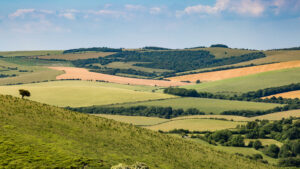ABOUT THE STUDY
Main applicant/Principal Investigator: Dr Sílvia Pérez-Espona (Anglia Ruskin University)
Collaborators: Dr Javier Pérez-Barbería (The James Hutton Institute)
This study aims to assess genetic diversity in the Major Histocompatibility Complex (MHC) in forest and open hill populations of Scottish red deer (Cervus elaphus). The proposed project consisted on genotyping the MHC class II DRB3 exon 2 a total of 48 individuals from two forest (Tarlogie, Inshriach) and two open hill (Strathconon, Abernethy) Scottish red deer populations; 12 individuals from each population (6 stags, 6 hinds). For each individual a total of 48 clones, resulting from the amplification and cloning of the MHC class II DRB3 exon 2, were to be sequenced. This experiment would result in a total of 2,304 MHC sequences (48 sequences per individual) that will allow establishing the minimum number of clones per individual that need to be screened to capture the complete MHC allelic diversity in an individual red deer.
Progress:
Laboratory analysis
The project is progressing satisfactorily with the 24 red deer stags sampled from the four selected populations already analysed (MHC class II DRB3 amplified, cloned and sequenced). For the 24 red deer hinds, the MHC class II DRB3 has already been amplified, all PCR products cloned and currently preparing the samples to be sequenced. The completion of the sequencing is expected to be by the end of February/beginning of March 2015.
Preliminary results
Results from the sequencing of the 24 red deer stags has revealed that genetic diversity at the MHC is high, with the highest number of alleles ever discovered in an ungulate (some individuals presented > 30 alleles). This reflects the importance of conducting thorough analyses, such as the one conducted here, if we are to accurately assess genetic diversity at the MHC. Genetic diversity was high in both forest and open hill populations. Although more detailed data analyses need to be conducted when the hind data is available, the data indicates that some set of alleles are habitat-specific (i.e. only found in either forest or open hill).
Plan of action for year 2
Finalise the sequencing of MHC alleles of 24 red deer hinds (end of February/March 2015).
Data analyses of MHC data (April 2015).
Publication of MHC data (summer 2015).
Article in Deer Magazine (autumn 2015)
FURTHER READING

Discover the Latest Insights in Digital Deer’s Summer 2024 Edition!
We are delighted to announce the release of the Summer 2024 edition of our highly anticipated free online taster version of the members’ magazine, Digital Deer. Packed with exciting content, this edition is your gateway to the latest news, research, and insights from the world of deer. Here’s a sneak peek into what you can expect:

Protect Our Park – Don’t Feed The Deer Campaign at Phoenix Park
Ireland’s Office of Public Works (OPW) has launched the ‘Protect Our Park – Don’t Feed the Deer’ campaign, aiming to alter public behaviour to safeguard the wild deer in Dublin’s Phoenix Park. This initiative follows a recent University College Dublin (UCD) report highlighting the negative impact of human feeding on the behaviour and welfare of the park’s deer population.

Understanding Tick Hazards in South Downs National Park
The British Deer Society is excited to share the findings of a groundbreaking research project we supported, aimed at understanding tick hazards in South Downs National Park (SDNP). As the UK’s most visited national park, SDNP attracts countless visitors every year, making the management of tick-borne diseases a critical public health concern.










